Here’s a design challenge: build a submarine without using a physical prototype. That’s the situation engineers at BAE Systems Submarine Solutions (UK) faced when the company was contracted to build the Astute Class nuclear submarines, considered the most sophisticated and complex ever built, for the UK’s Ministry of Defense. The first Astute submarine successfully launched on June 8 of this year.
The engineers at BAE use PTC CAD products and turned to Gold PTC Partner Advantage Program member, Virtalis (Manchester, UK) to create, install and integrate Virtual Reality (VR) systems for product development and manufacturing.
Tasked with building three Astute Class nuclear submarines, the engineers decided to accelerate the process using a VR system instead of creating physical prototypes. The VR system had to be easily accessible both to the engineers, as well as to welders and pipe fitters, who would physically build the submarine.

A large 3D stereoscopic theater helps engineers create design schematics for a submarine without resorting to physical prototypes. The Virtual Reality program exposes potential clashes between submarine components and assemblies, enabling changes before build.
For design, the engineers used the PTC CADDS 5 shipbuilding program, a tool that enables groups of engineers to work simultaneously on design, validation, and machining of the same assemblies. For the VR system, they commissioned Virtalis to integrate the PTC Division MockUp program with Virtalis’ VR tools.
In a large 3D stereoscopic theater, this program exposes potential clashes between submarine components and assemblies. If needed, a redesign can be performed prior to the build. The use of advanced visualization enables all those working on the vessel to view the 3D virtual models in accessible ‘cabins’ locally positioned on gantries surrounding the boat. Both the first in class Astute and the second in class Ambush have a dedicated VR cabin, though each is capable of running the other’s models should one cabin be booked or unavailable for some reason.
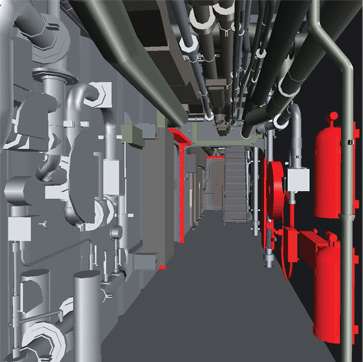
Here are three typical views that engineers see in the VR system. (Interior)
John Martin, a consulting engineer at BAE, notes, “This was the vision for the use of virtual reality when it was decided not to rely on physical prototypes in 1997. Being able to view the 3D virtual models in accessible cabins provides a direct replacement for expensive physical models.”
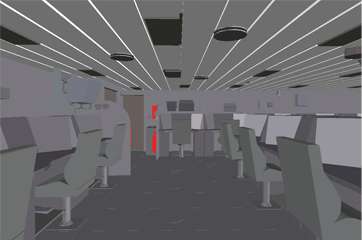
Control Room
Unlike other VR software packages, the PTC Division MockUp package enables viewing of large areas of the boat. To ensure the VR cabins and suites are almost always available, and to maximize the company’s return-on-investment, 30 personnel have been trained on how to run the MockUp software and operate the Virtalis VR equipment.
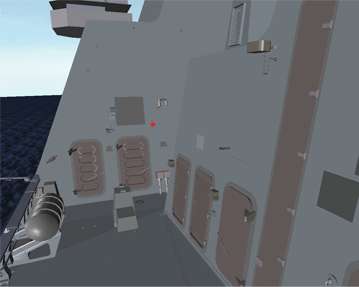
Exterior
The old process of building a submarine using prototypes would have taken pipe fitters and welders significantly more time than the environment BAE is working in today. Historically, the assembler had his materials on the shop floor, and referenced CAD drawings and a physical prototype scale model of the real sub in a completely different area.
When the assemblers had a question on the design and needed to reference files, they would travel off the shop floor and over to the CAD drawings, models, and the physical prototype. Assemblers would have to envision the area of the sub they were working on, a difficult task for several reasons: the subs are cylinder-shaped, but the physical prototype detail was not easily accessible, and the CAD data and drawings are “flat.” After consulting both these sources, the assembler would return to the project and perform the task. The assembler would spend time studying the model and drawings, and walk back and forth from actual design to prototype to replicate exactly what was required. Often, the assembler was not a trained CAD/IT expert and had little working knowledge of the programs.
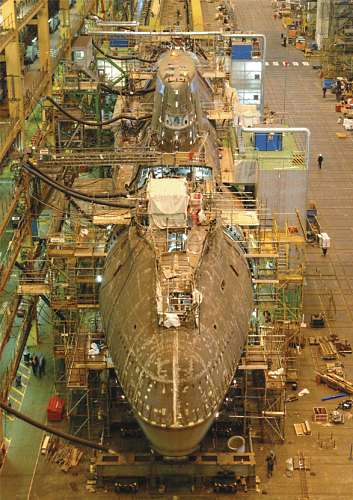
Because of the integrated VR and CAD programs, assembly personnel have an easier time following design instructions than with previous CAD drawings.
In today’s VR environment, the assemblers at BAE can use the virtual prototype running in 3D stereo where they can “virtually” review ‘before-and-after’ builds of the design area they are working on. They can upload the system with virtual prototypes and then manipulate files, which has greatly increased confidence in the designs and the tasks. Using 3D glasses, a wireless keyboard and a mouse, the assemblers can orient themselves in this 3D world and essentially fit themselves into the project.
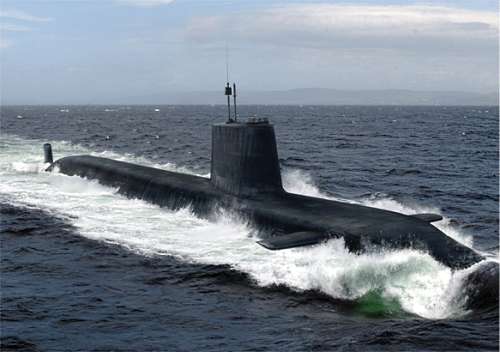
One of three commissioned Astute Class nuclear submarines.
The VR tools deliver significant time-to-market benefits. They reduce the amount of time, effort and money spent on physical prototypes; give engineers real-time access to virtual models and related engineering data; provide a faster upload time of 3D models for the engineers; and offer full access to the VR design by non-CAD/IT users.
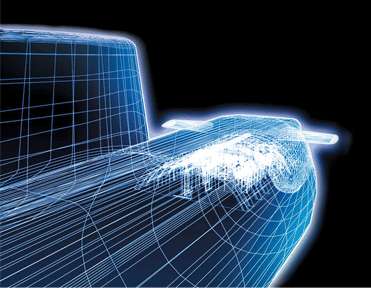
An initial mesh of the nuclear submarine.
The PTC-Virtalis VR system has greatly accelerated time-to-market for BAE Systems Submarine, increasing design and build productivity, making design data available in real-time to all users, increasing the efficiency of welders and fitters who don’t need CAD/IT training to use the system, and eliminating workers’ time wasted traveling back and forth from the shop floor to the design department. No doubt, the PTC-Virtalis VR solution will continue to help BAE Systems throughout the Astute project, helping designers, engineers and all product stakeholders work more efficiently and productively in their new virtual world.
Virtalis
www.virtalis.com
PTC
www.ptc.com
:: Design World ::
Filed Under: Aerospace + defense, Software • 3D CAD, Software • FEA, Virtual reality, ENGINEERING SOFTWARE





Tell Us What You Think!